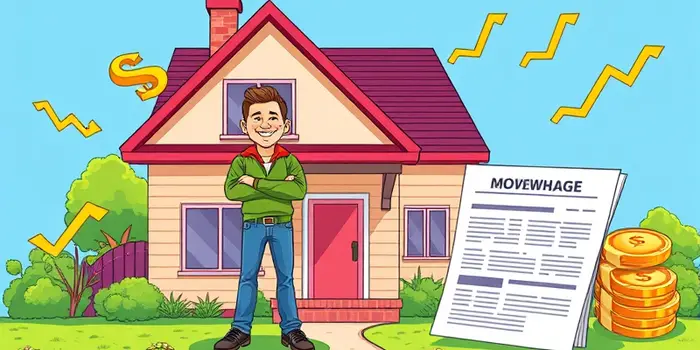Refinancing a mortgage can feel like a daunting process, but with the right guidance, it can transform your financial future. By understanding each step and leveraging key strategies, homeowners across the country have managed to save thousands over the loan's lifetime and regain control of their monthly budgets.
What Is Mortgage Refinancing?
Mortgage refinancing replaces your existing home loan with a new one, often featuring improved terms. The new mortgage pays off the current balance, and you begin payments under the new agreement. Homeowners typically pursue refinancing to secure a lower interest rate, shorten the loan term, or tap into equity.
Depending on your goals, you may switch between fixed and adjustable rates, adjust your repayment timeline, or extract cash for projects. When executed wisely, refinancing can become the cornerstone of debt reduction and long-term financial planning.
Why Refinance?
The decision to refinance hinges on tangible benefits. Even a modest rate reduction of 1%–2% can translate into substantial savings over decades. Beyond rate adjustments, refinancing offers flexibility and access to equity.
- Lower your interest rate by securing current market rates below your original loan’s rate.
- Immediately improves monthly cash flow by reducing payments and freeing up discretionary income.
- Shorten the loan term to pay off your home faster and cut overall interest costs.
- Tap into home equity through a cash-out refinance for renovations, debt consolidation, or emergencies.
For example, homeowners who refinanced a $333,690 balance from 7% to 5% after six years could save nearly $45,000 in interest. Average borrowers nationwide save about $12,000 over five years, netting $7,000 after closing costs.
When to Consider Refinancing
- Interest rates have dropped significantly since your original mortgage.
- Your credit score has improved, unlocking better rate tiers.
- Your home’s appraised value has risen, lowering your loan-to-value ratio.
- You want to switch from an adjustable to a fixed-rate for predictability.
- You aim to shorten payments without drastically increasing monthly obligations.
If any of these conditions apply, it’s worth evaluating potential offers. A rate reduction of at least 0.5% is often the threshold for meaningful savings.
Step-by-Step Refinancing Process
Approaching refinancing with a clear plan maximizes your chances of success. Follow these stages to stay organized and informed.
- Set your financial goal: Decide whether you aim to lower payments, shorten the term, or extract equity.
- Check your credit report and score; a minimum of 620 is common for conventional loans.
- Assess your home equity: target an 80% loan-to-value (LTV) ratio to avoid mortgage insurance.
- Gather documentation: pay stubs, tax returns, asset statements, and debt records.
Next, shop and compare at least three lenders, focusing on interest rates, fees, and terms. Shop within a 45-day window to minimize credit score impact from multiple inquiries. After selecting a lender, submit your application and required paperwork.
An independent appraisal will confirm your home’s value, followed by underwriting, during which the lender reviews all financials. At closing, you’ll finalize documents and pay closing costs—typically 2%–6% of your loan amount—before the new loan pays off the old one.
Types of Refinancing
Selecting the right refinance product is as important as timing. Options include:
- Rate-and-term refinance: change your rate and/or term without altering loan balance.
- Cash-out refinance: borrow above your existing balance and receive the difference in cash.
- Cash-in refinance: pay down principal upfront to improve terms.
- Streamline refinance: fewer documents for FHA or VA loans, accelerating approval.
Costs and Considerations
Before committing, weigh all expenses and benefits. Typical closing costs range from $3,000 to $6,000, averaging around $5,000. To determine whether refinancing makes sense:
- Calculate the break-even point by dividing closing costs by monthly savings.
- Consider how long you plan to stay in the home; selling before break-even negates benefits.
- Recognize that resetting a long-term loan may increase total interest paid if you extend your horizon.
For instance, $5,000 in costs against $150 monthly savings yields a break-even of 33 months. If you’ll stay beyond three years, you’ll net positive gains.
Risks and Warnings
While refinancing can be transformative, potential pitfalls exist. Beware of “no-cost” offers where fees are rolled into the loan, leading to a no-cost incentive might backfire. Restarting a 30-year mortgage could also mean paying more interest long-term, despite lower payments.
Additionally, expect a temporary dip in your credit score from hard inquiries. Make sure to review all terms and projections carefully, and use reputable calculators to verify potential savings.
Conclusion
Refinancing your mortgage is a strategic move that can unlock significant savings, improve cash flow, and offer financial flexibility. By setting clear goals, comparing offers, and understanding all costs and risks, you position yourself to make the best decision for your unique situation.
With diligent preparation and an informed approach, you can harness the power of refinancing to achieve long-term financial stability and retain more of your hard-earned money for life’s priorities.
References
- https://www.rocketmortgage.com/learn/how-does-refinancing-work
- https://www.nationwide.com/lc/resources/personal-finance/articles/benefits-of-refinancing-your-home-loan
- https://www.bankrate.com/mortgages/how-does-refinancing-a-mortgage-work/
- https://www.53.com/content/fifth-third/en/financial-insights/personal/home-ownership/the-mortgage-refinancing-process-and-its-benefits.html
- https://www.rocketmortgage.com/learn/pros-and-cons-of-refinancing
- https://www.freddiemac.com/research/insight/20210512-black-hispanic-borrowers-save-refinancing
- https://www.experian.com/blogs/ask-experian/when-to-refinance-mortgage/
- https://www.citizensbank.com/learning/refinance-process.aspx










